The game Zeldenrust
Introduction
In the game the students have a holiday job in a hotel. To foster engaged gameplay and create context for the educational content, a storyline was created. The theme of the storyline (earn money, holiday) was tailored to fit the teenage students interests and world.
The game consists of a lead game and different subgames. In the lead game the players are introduced to the storyline. Players can also view their scores on a map with high scores. In the lead game the players can choose one of the three different subgames:
- fill refrigerators
- serve drinks
- serve orders
Successful completion of the tasks will lead to an increase in money (score). Every level equals one day of work in the hotel and contains all three subgames.
[Top]
The game
Starting the game, the player chooses an avatar with a choice for gender and origin.
![]()
Avatar screen
After a short introduction (the back story), players are accompanied to the Room where players can choose subgames and consult their game score. Subgames are represented as paintings on the wall. The map gives players an overview of their score and the countries they can already visit.
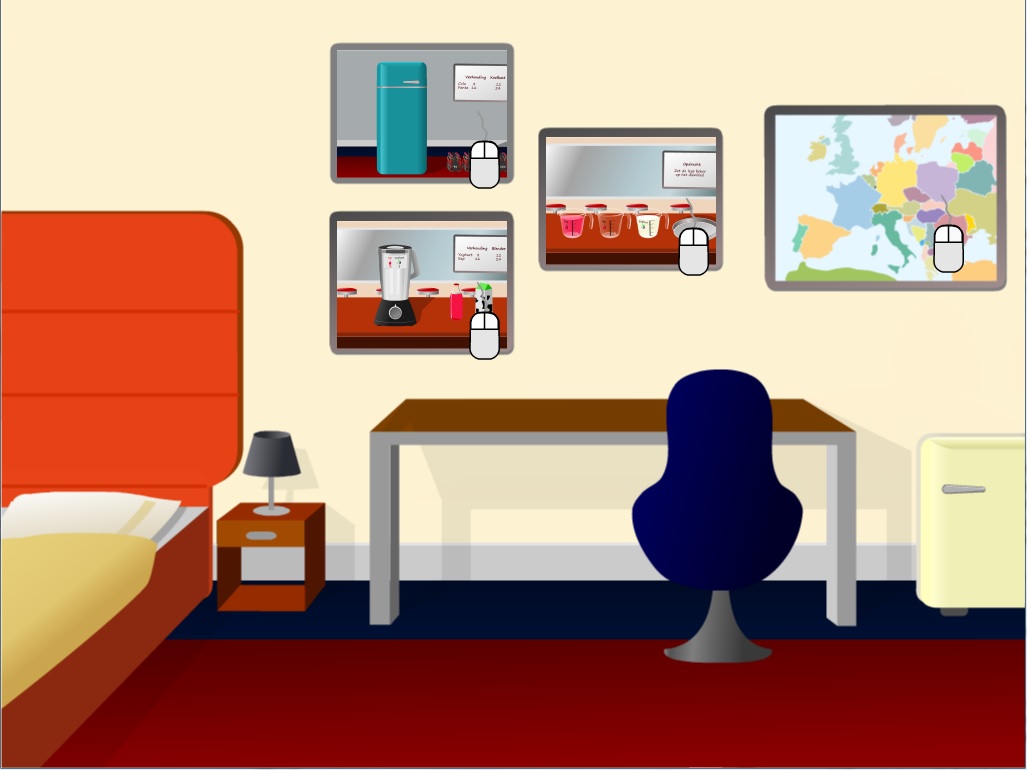
Room
The refrigerator subgame
Players need to fill the refrigerator in accordance with a given proportion (e.g. for every x bottles of Fanta, there need to be y bottles of cola in the refrigerator. If there are z bottles of Fanta in the refrigerator, how many bottles of cola do you need?). The assignment appears on the white board. Players can place the correct amount of bottles in the refrigerator by clicking or by dragging the bottles. By closing the door they receive feedback.
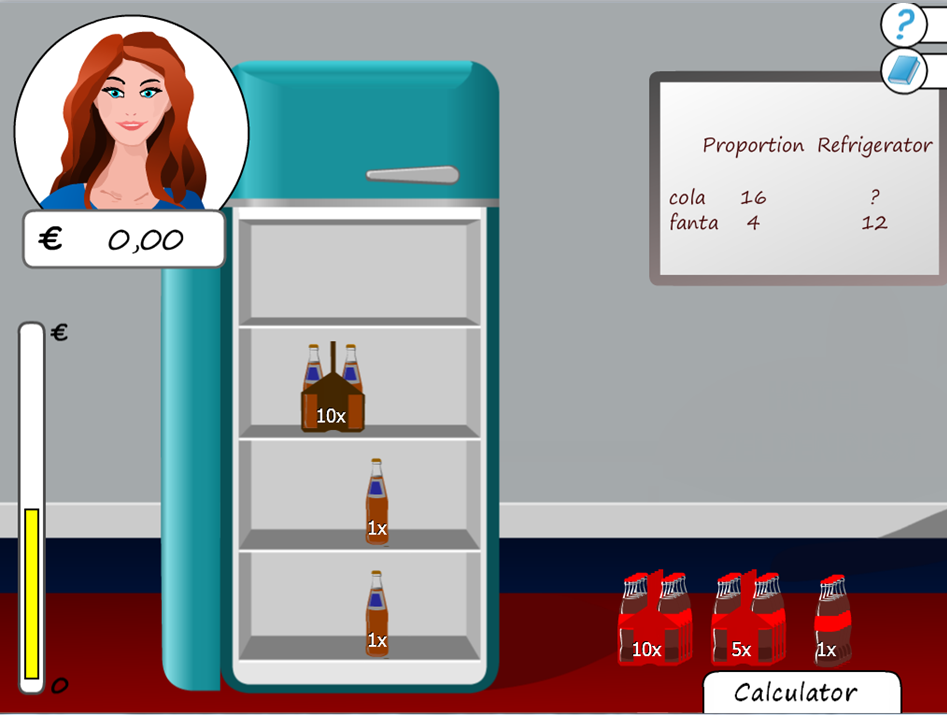
Refrigerator subgame
The Blender subgame
Players need to complete a cocktail in accordance with a provided recipe.The recipe is written on the white board. The blender already contains a mixture of yoghurt and strawberry juice, but the quantity of the ingredients in the blender does not fit the recipe. The players need to add yoghurt and/or strawberry juice to ‘fix’ the mixture so that it is in accordance with the ratio that the recipe prescribes. The players can add the ingredients by dragging the bottles over the blender.
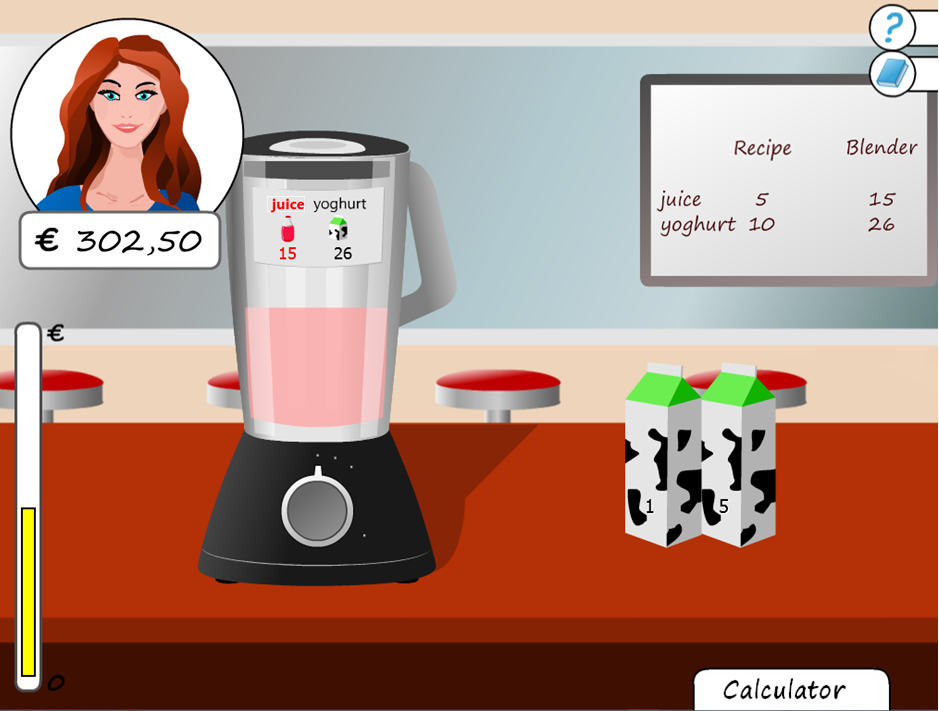
Blender subgame
Servings subgame
The players need to serve the drink that matches the order (e.g., serve the sweetest cocktail). The assignment appears on the white board. The player needs to drag the correct pitcher to the serving tray.
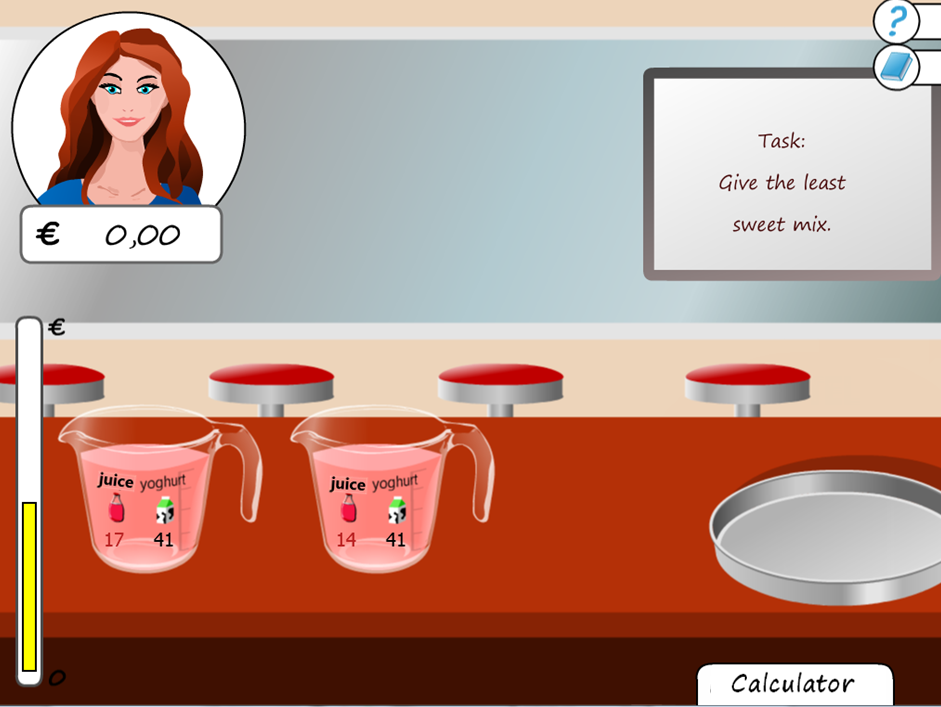
Servings subgame
[Top]
Tools
The game has several tools to aid gameplay. In an interactive tutorial players learn the game mechanics, that is, they receive information about the tasks and the actions that are possible in the game to perform the task.
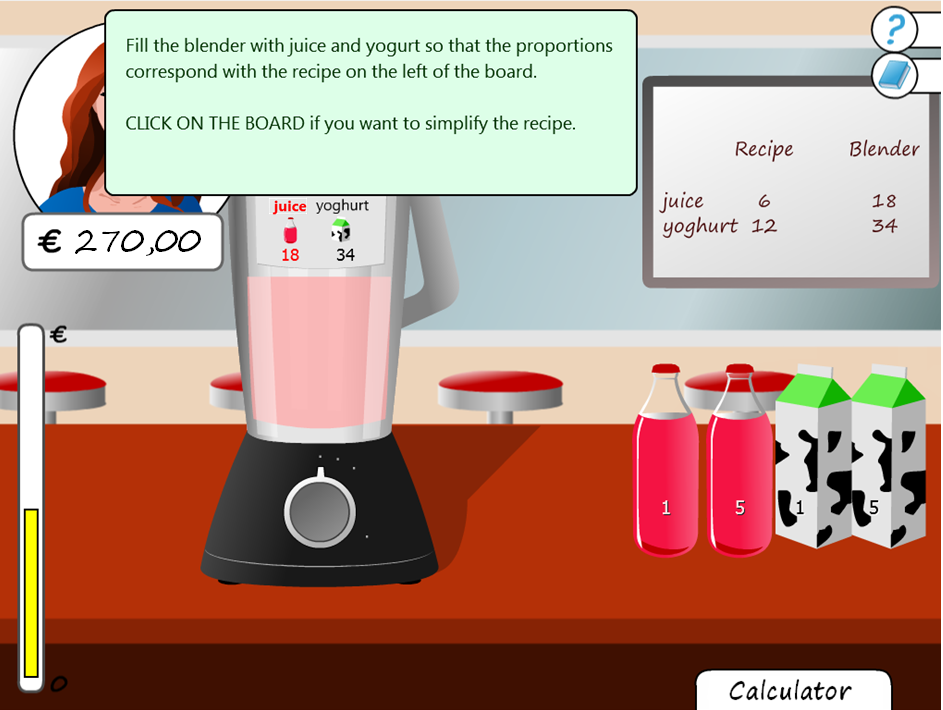
Game mechanics tutorial
A content related tutorial gives players information about the different proportional reasoning problems and the strategies they can use to solve these problems. This tutorial can be activated whenever needed .
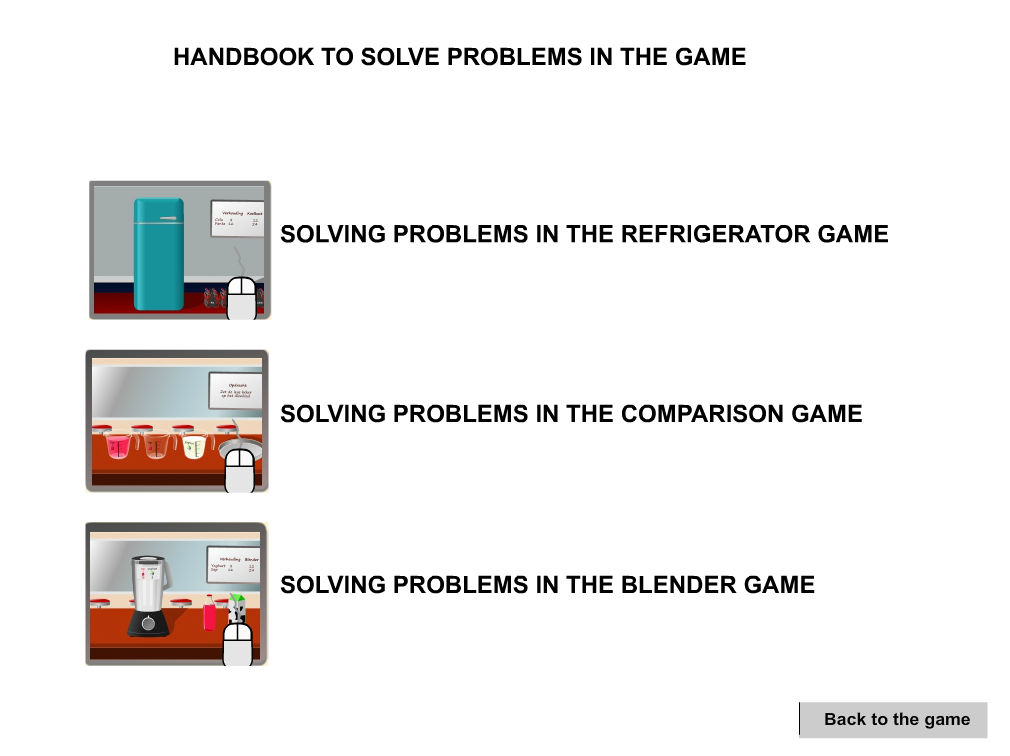
Content tutorial
Players can also add a column to the representation of the problem to help them to simplify the first ratio. In this column they can fill out their interim solution so they do not have to calculate too much steps in their head. In addition, students can use a built-in calculator.
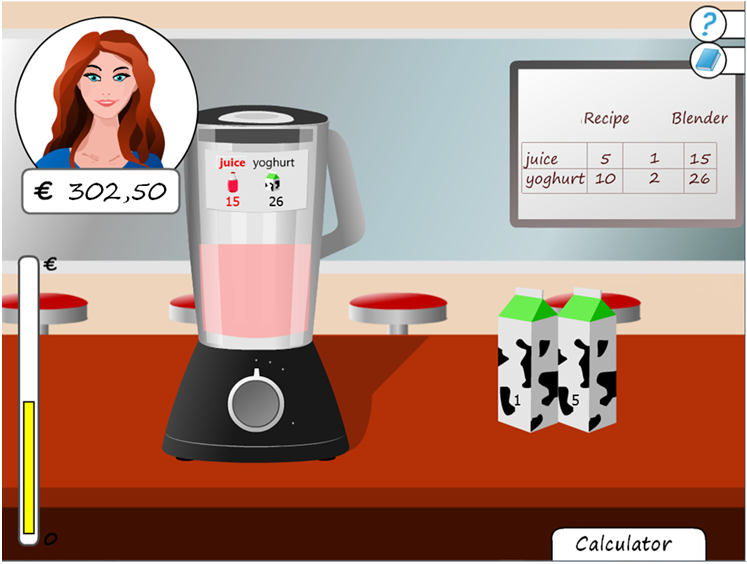
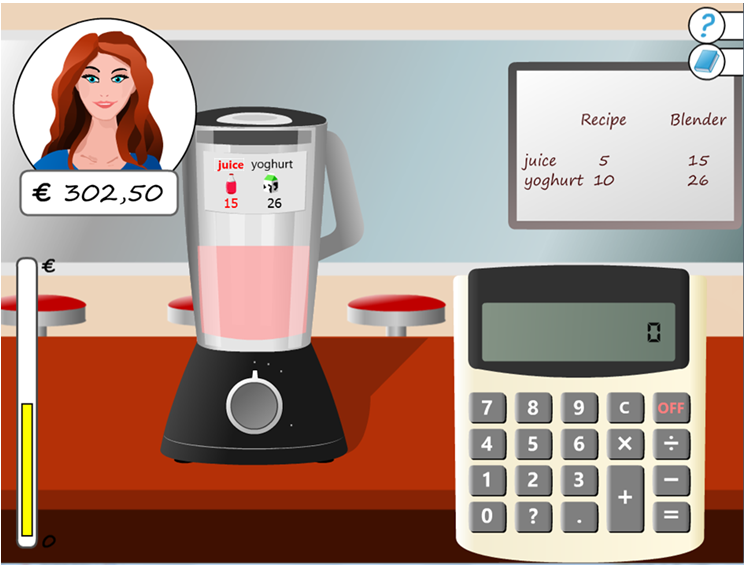
Additional column to simplify a ratio and the Calculator
[Top]
Feedback
During the game players receive different kinds of feedback on their actions. The feedback is either related to the:
- accuracy (the solution is right or wrong),
- efficiency (they are spoiling materials (e.g. dropping bottles), or they start off with a right move)
- performance (how their score relates to that of other players).
The feedback is provided by a non-playable character (NPG), an increase or decrease in score, or a visual representation of ranking.
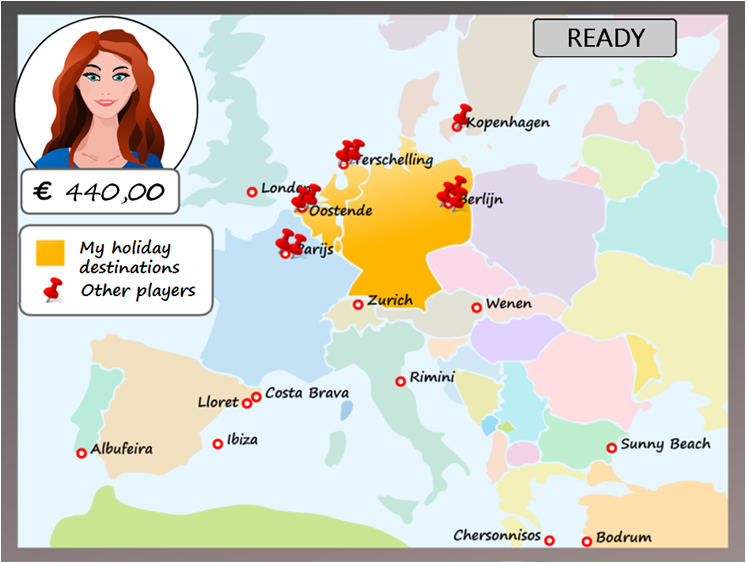
When a subgame is completed, players are automatically redirected to the map where they receive feedback on their performance. The map shows which countries they can visit with the money they have earned. Furthermore, they see how their score relates to that of others. With this information players get an idea about how they are performing on the tasks compared to others.
[Top]
Score mechanism
Students earn money by solving the tasks in the subgames. They can increase the money by performing positive actions such as starting the task in a correct way (e.g., putting the first bottle in the refrigerator), but the money will decrease when performing undesired actions (e.g., using the calculator will cost money).
[Top]
Design considerations
The following technical demands were defined:
- the game can be played online and stand-alone on school PC’s
- variable information (e.g., texts) can be easily changed
- modularity (i.e., game functionality can be easily modified, deleted or added)
- multiple versions (with combinations of instructional support) can be implemented
- all actions of the game players are logged
- save/reload
Based on these demands Flash Develop/ActionScript with a MySQL database connection was chosen.

Technical design
In order to accommodate the required flexibility all variable information such as assignments, feedback, parameters, introduction texts etc are described in xml files that can be easily modified. The modularity demand is met by dividing the game in a base game and several subgames. With the object-oriented/component-based paradigm that is chosen, it is relatively easily to modify, delete or add new subgames.
[Top]
Reference
For a more extensive description see:
Vandercruysse, S., ter Vrugte, J., de Jong, T., Wouters, P., van Oostendorp, H., Verschaffel, L., Van Dooren, W., & Elen, J. (2015). “Zeldenrust”: A mathematical game-based learning environment for prevocational students. In J. Torbeyns, E. Lehtinen, & J. Elen (Eds.), Advances in Game-Based Learning (pp. 63-81). Berlin: Springer-Verlag.
[Top]
